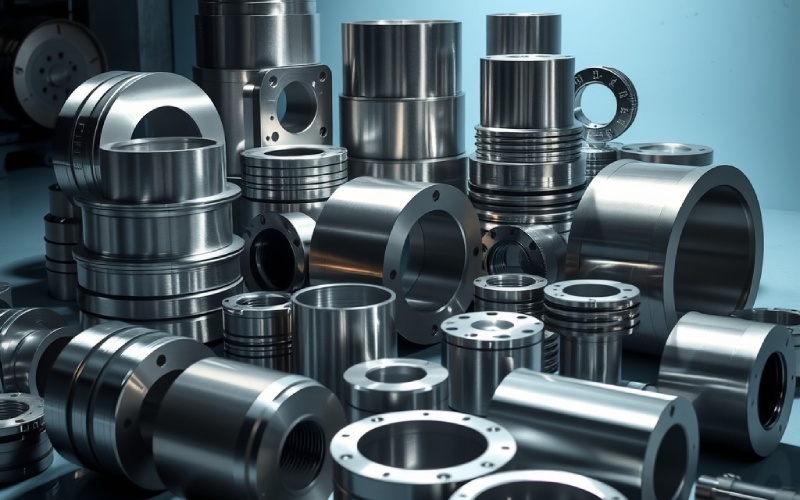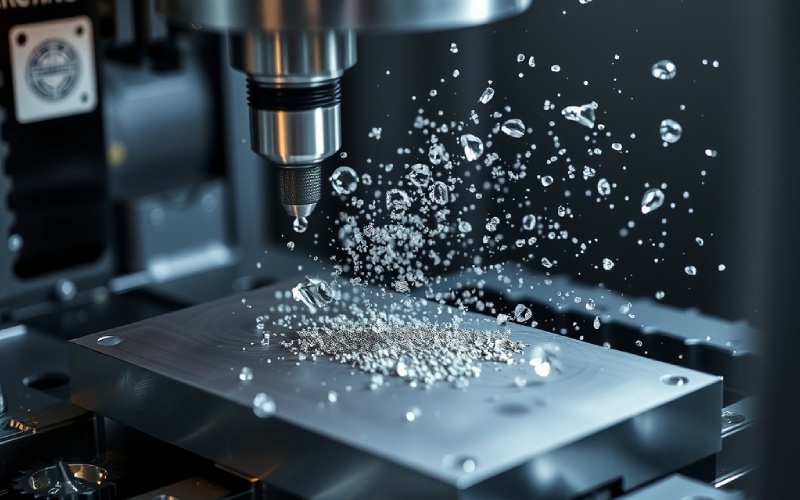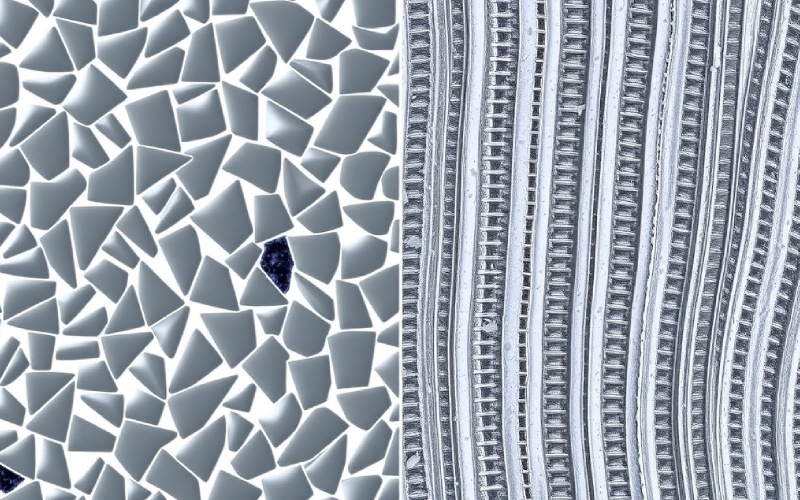Lassen Sie sich von Istar mit unserer Erfahrung und unserem Know-how beim Start Ihres Projekts unterstützen!
Laden Sie Ihre Designdateien und Produktionsanforderungen hoch und wir melden uns innerhalb von 30 Minuten bei Ihnen!

Aluminum alloys are all around us. You can find them in the soda can you are holding and in the airplane flying high above. But not all aluminium alloys are the same. There are really thousands of them! This article will be your simple guide to help you understand this amazing metal. We will look at what makes an aluminum alloy special. We will check out the different kinds and see why they are so important in our world today. If you have ever been curious about the materials used to build our modern life, then this article is for you.
In my experience, it is always best to start with the simple facts. So, what is an aluminum alloy? You can think of it like baking a cake. You begin with your main ingredient. In this situation, that ingredient is pure aluminum. Pure aluminum is a soft metal that does not weigh much. It also has great corrosion resistance, which means it does not rust easily. But by itself, it is not very strong. To make it stronger and give it other good features, we mix it with other elements. We call these added things an alloying element.
The most common alloying elements are copper, magnesium, in addition to manganese, silicon, and zinc. When we add an alloying element to aluminum, we make an aluminum alloy. The special recipe, or composition, of each aluminum alloy decides what its final qualities will be. This process lets us make a very large number of aluminium alloys. Each one is made just right for a certain task. This power to make custom changes is what makes aluminium alloys so widely used. We can make them very strong for an airplane wing. Or we can make them easy to shape for a soda can. That is the magic of an aluminum alloy.

When I was new to this, the number system for aluminium alloys looked hard to understand. But it really makes a lot of sense. The different kinds of aluminum alloys are sorted into groups called series. The first number in the series tells you the main alloying element. This helps people who build things understand the basic composition and qualities of the metal very quickly. There are two main groups. One is wrought alloys, which are shaped by force. The other is cast alloys, which are made by pouring liquid metal into a mold.
For wrought aluminium alloys, the system has a four-digit number. Here is a simple guide to what they mean:
| Series | Main Alloying Element(s) | Wesentliche Merkmale |
|---|---|---|
| 1xxx | At least 99% pure aluminum | Great corrosion resistance, high thermal conductivity. |
| 2xxx | Kupfer | High strength, used a lot in aerospace. |
| 3xxx | Mangan | Easy to work with, medium strength. |
| 4xxx | Silizium | Lower melting point, used a lot for welding wire. |
| 5xxx | Magnesium | Good for welding, strong, great for use near the ocean. |
| 6xxx | Magnesium and silicon | Easy to form and has good corrosion resistance. |
| 7xxx | Zink | Very high strength, another top choice for aerospace. |
Cast aluminum alloys have a system that is a lot like this one. But it uses a three-digit number with a decimal point. Learning about these alloy systems is the first step. It helps you pick the right aluminum alloy for any project. The 3000, 5000, and 6000 series alloys are some of the most common ones you will see.
I have always been amazed by the long list of good things that come with using an aluminum alloy. It is not just one single thing. It is a mix of good qualities that makes this metal so helpful. The most famous quality is its low density. An aluminum alloy weighs about one-third of what steel weighs. This is a very big benefit in areas like aerospace and automotive manufacturing. In these areas, saving weight is very important. This leads to better gas mileage and better performance.
But just because it is light does not mean it is weak. Many aluminium alloys have a very high strength-to-weight ratio. This means they are very strong for how little they weigh. Another key feature is its natural corrosion resistance. When an aluminum alloy is out in the air, it grows a thin, tough layer of oxide on its surface. This layer protects it from rust and other damage from the weather. They also have wonderful thermal conductivity. This is why they are used for things like heat exchangers. From the point of view of making things, most aluminium alloys are easy to shape into different forms. This makes them useful for many different things.
The aerospace world is where aluminium alloys really show how great they are. In my time in this field, I have seen with my own eyes how the right metal is very, very important for building safe planes that fly well. As much as 80% of a new airplane’s frame is made of aluminum alloy. The main reason for this is the amazing high strength-to-weight ratio that some aluminium alloys have. Making things lighter is the most important goal in aerospace. This is because it has a direct effect on how much fuel is used and how much the plane can carry.
The most common alloys used in aerospace come from the 2xxx and 7xxx series. For example, an aluminum alloy like 2024 has copper as its main alloying element. It is known for its high strength and its ability to not get weak from being used over and over. This makes it perfect for the main body of the plane. The 7075 aluminum alloy, with zinc as its main alloying element, is one of the strongest aluminium alloys you can get. It is used for parts that need to handle a lot of pressure, like the skin on the wings. These high-strength aluminum alloys also need to have good corrosion resistance. They also need to be tough to handle the tough conditions of flying. The creation of new aluminum-lithium alloys has made things even better. These have cut weight by up to 10% and made the parts stiffer.
Of course. This is a basic and important difference when we talk about aluminium alloys. The words “wrought” and “cast” tell us how the metal is made into a final product. I have worked with both kinds. Each one has its own good points and uses. Wrought aluminum alloys are shaped by machines or tools. This can be done by rolling, pushing through a shape, or hammering. You can think of it like a blacksmith shaping a piece of steel. This process lines up the inside structure of the metal. This usually makes wrought alloys stronger and easier to bend without breaking than cast alloys. About 85% of all aluminum is used for wrought products like sheet metal, plates, and shaped bars.
Cast aluminum alloys, on the other hand, are different. They are made by melting the aluminum alloy and pouring it into a mold. This way of making things, called aluminum casting, is great for making shapes with a lot of detail. These shapes would be hard or impossible to make with a forming operation. Cast alloys usually do not have as much pulling strength as wrought aluminum alloys. But cast alloys are a good value for the money because of their low melting point. The most important cast aluminum alloy system uses silicon as the main alloying element. This gives it great qualities for casting. You will see cast alloys in things like engine blocks and other metal parts with complex shapes.
When you pick a material, you need to look at all of its qualities. The characteristics of aluminum alloys are what make them a good choice for so many different jobs. We already talked about their low density and high strength-to-weight ratio. These are probably their most famous features. This mix of features is something that changes everything in a big way for transportation applications, from cars to airplanes.
Another key feature is their excellent corrosion resistance. The protective oxide layer that grows on an aluminum alloy can fix itself. If you scratch it, a new layer grows back almost right away. This makes them perfect for things that are used outdoors or near the ocean. The mechanical properties of aluminium alloys can be changed to an amazing level. By changing the alloying element and using heat treatment, we can make an aluminum alloy that is soft and easy to shape. Or we can make one that is very hard and strong. They also have high thermal conductivity and are good at conducting electricity.
This is how we can make small changes to get the qualities of an aluminum alloy just right. Heat treatment is a method of heating and cooling in a very controlled way. It can change the inside structure of the metal in a big way. This affects its strength and how hard it is. It is important to know that not all aluminium alloys can be made stronger this way. We call the ones that can be “heat-treatable.” These are usually the 2xxx, 6xxx, and 7xxx series alloys. The alloys contain elements like copper, magnesium, and zinc. These elements make this process possible.
There are a few main steps in the heat treatment process. The first one is solution heat treatment. In this step, the aluminum alloy is heated to a high temperature. This dissolves the alloying elements into the aluminum. Then, it is cooled down very fast, or quenched. This traps the elements where they are. Finally, the metal is aged. This can happen on its own over a few days at room temperature. Or it can be done on purpose by heating it to a lower temperature for a certain amount of time. This aging process is also called precipitation hardened. It is what makes these heat-treatable alloys so strong. A heat-treatable alloy like the popular 6061 aluminum alloy gets its amazing strength from this process. In fact, aluminum 6061 is one of the most useful and widely used heat-treatable aluminium alloys.

From my time in the workshop, I can tell you that learning to weld an aluminum alloy is a skill that needs a lot of practice. It has some special problems when you compare it to welding steel. One of the biggest challenges is the high thermal conductivity of aluminum. The heat from the welding tool spreads out very fast. This can make it hard to get the weld to go deep enough without melting a hole in the metal. This is especially true for thin sheet metal. You need to use more heat and move faster than you would with steel.
Another problem is the oxide layer. As we talked about, an aluminum alloy has a protective layer of aluminum oxide. This layer has a much higher melting point (around 2072°C) than the aluminum itself (about 660°C). If you do not clean this layer off just before you weld, it can make the weld dirty or weak. Also, melted aluminum can take in a lot of hydrogen. This can lead to porosity, which means tiny bubbles, in the weld as it gets cold. This makes the joint weaker. Lastly, some high-strength aluminum alloys, like the ones in the 2xxx and 7xxx series, can sometimes get a “hot crack” when being welded. This happens because of heat pressure. This makes them very difficult to weld using old ways like arc welding or gas metal arc welding.
Over the years, I have seen some amazing new ideas and methods for how we join metals. Friction stir welding (FSW) is one of the most exciting ones, especially for aluminium alloys. It is a way of joining that does not melt the metal. Instead, a spinning tool with a special pin is pushed into the line where two pieces of aluminum alloy meet. The rubbing from the tool heats the metal. This makes it soft and easy to move, like plastic. As the tool moves down the line, it “stirs” the soft material from the two pieces together. When it cools, it creates a very good weld.
The biggest good point of friction stir welding is that the metal does not melt. This means you do not have many of the problems of old-style welding, like tiny bubbles and hot cracking. This makes it possible to properly weld those hard-to-weld high-strength aluminum alloys in the 2xxx and 7xxx series. These are so important for aerospace. The welds that are made this way are very strong. They have excellent mechanical properties. I’ve seen this welding process used to make many things. For example, it is used for fuel tanks on space rockets and panels on fast trains. It is a totally new and better way of working with certain aluminum alloys.
This is the question people ask me the most. The real answer is, with so many different types of aluminum alloys to choose from, it always comes down to this: what do you need it to do? The first thing to do is to think about the most important needs for your structural material. Are you looking for high strength, like for a part on an airplane? If so, you might want to look at the 7xxx series alloys. Do you need excellent corrosion resistance for a boat? The 5xxx series alloys are a very good choice.
For everyday, general use, you often cannot go wrong with the 6000 series alloys. An aluminum alloy like 6061 is one of the most commonly used aluminium alloys. This is because it gives a great mix of strength, resistance to rust, and it is easy to cut and shape with tools. It is a real workhorse. If you are doing a lot of bending or shaping, a 3xxx series aluminum alloy might be a better choice because it is easier to work with. Understanding the alloy compositions and the qualities they create is very important. Talking to a materials expert or a seller you can trust can help you look through the choices. They can help you make the best decision for what you need to do.